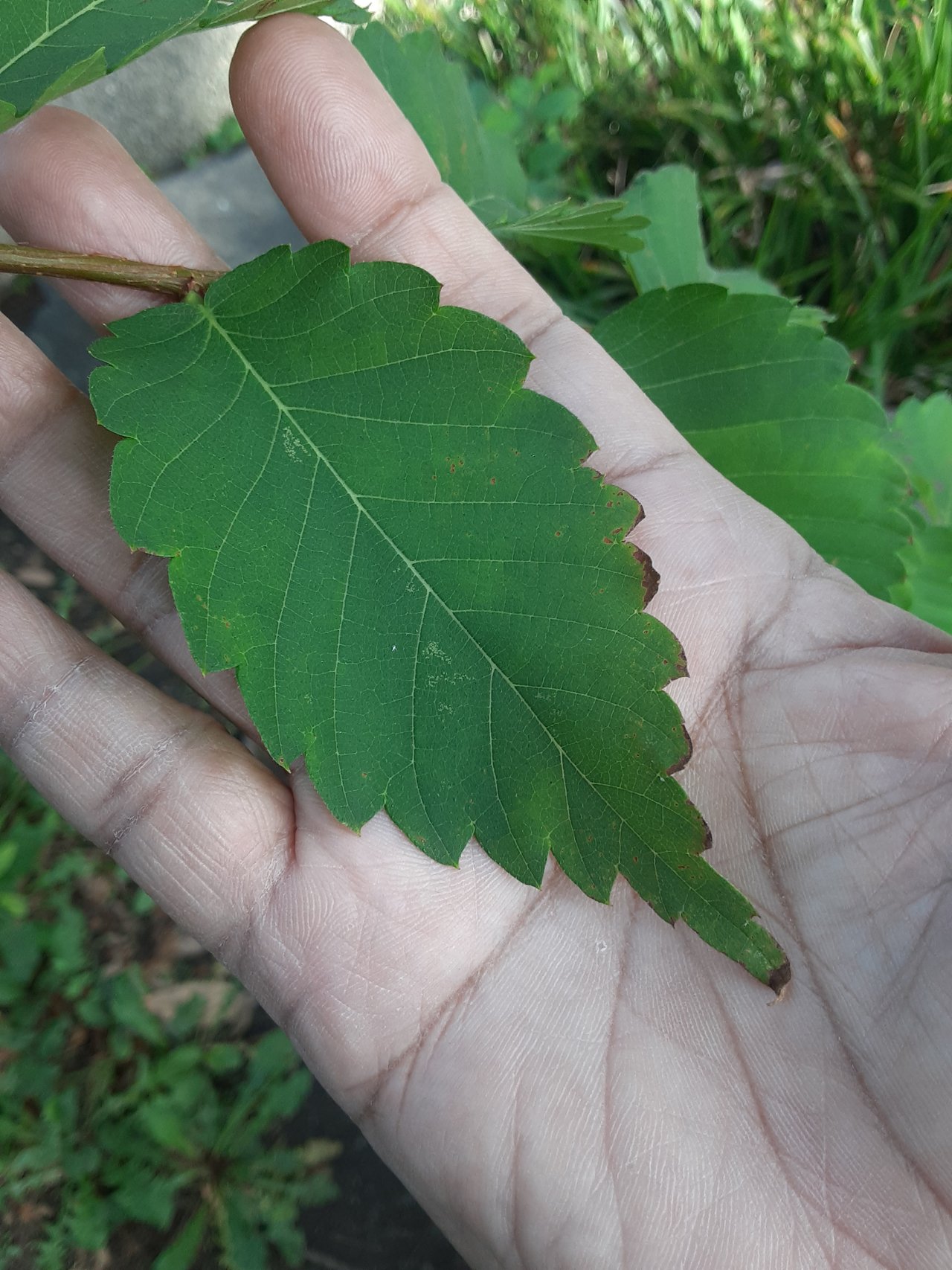
Quercus serrata, also known as the sawtooth oak or Japanese oak, is a deciduous oak tree native to Japan, Korea, and China. It can grow up to 25 meters tall and has a broad, spreading crown. The bark is gray or reddish-brown and furrowed.
The leaves are 5-15 centimeters long and 3-8 centimeters wide, with serrated margins. They are dark green above and paler green below. The flowers are small and inconspicuous, and the fruits are acorns.
Here are some additional characteristics of Quercus serrata leaves:
- They are simple, meaning they have a single blade.
- They are alternate, meaning they are arranged alternately on the stem.
- They are stipulate, meaning they have small, leaf-like structures at the base of the petiole.
- They are leathery, meaning they are thick and tough.
- They are serrated, meaning the margins have sharp teeth.
- They are glabrous, meaning they are hairless.
- They are deciduous, meaning they fall off the tree in the fall.
Quercus serrata is a popular ornamental tree in the United States and Europe. It is valued for its attractive foliage, its tolerance of a variety of soil conditions, and its ability to withstand air pollution. The wood of Quercus serrata is also used for a variety of purposes, including furniture, flooring, and veneer.
Ref.:
 |  |
